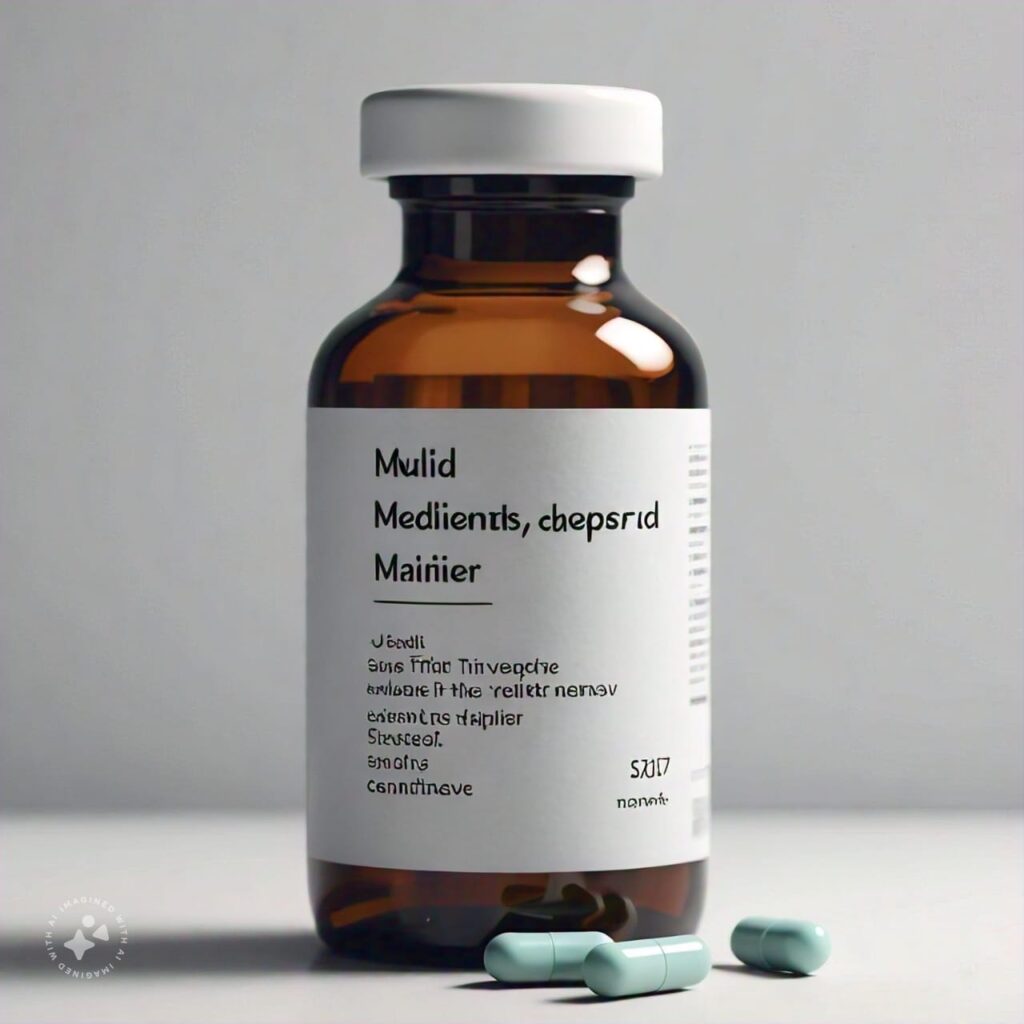Typhoid fever is an illness caused by the bacterium Salmonella typhi, commonly contracted through contaminated food or water. Millions worldwide experience this disease each year, particularly in areas with limited access to clean water and sanitation. Knowing the symptoms, how to test for it, and understanding general treatment options can be beneficial for overall health awareness. Here’s a look at key information about typhoid symptoms and treatment.

What is Typhoid Fever?
Typhoid fever is a bacterial infection that, if untreated, can progress from mild symptoms to serious health issues. It’s generally spread through the ingestion of food or water contaminated by the Salmonella typhi bacteria, which then invades the bloodstream and causes symptoms ranging from high fever to abdominal pain. Typhoid fever is particularly common in regions with poor sanitation and limited clean water.
Common Typhoid Symptoms
Typhoid fever often starts with mild symptoms, making it difficult to detect early without a medical diagnosis. Here are the typical symptoms associated with typhoid:
- High Fever: Fever is a prominent symptom, often starting low and gradually rising. It may reach as high as 104°F (40°C) within a few days.
- Fatigue and Weakness: Many experience a sense of general weakness or fatigue, which can last throughout the illness.
- Headaches: Persistent headaches are common, often worsening as the fever progresses.
- Abdominal Discomfort: Pain, bloating, or general discomfort in the abdominal region may develop.
- Loss of Appetite: A reduction in appetite can often lead to unintended weight loss.
- Digestive Changes: Depending on the person, digestive symptoms might include constipation or, conversely, diarrhea, especially in younger individuals.
- Skin Rash: In some cases, pink spots or a light rash may appear on the chest or abdomen in the second week.
- Mental Confusion: As typhoid advances, it may lead to mental confusion or delirium, especially in severe cases.
These symptoms typically appear 1-3 weeks after exposure and can vary in severity based on the individual’s health and immune response. Early recognition and appropriate response to these symptoms are beneficial for managing the illness.
Methods for Diagnosing Typhoid Fever
If you suspect typhoid fever based on these symptoms, a healthcare provider may perform specific tests to diagnose the condition. Here are some common diagnostic methods:
- Blood Test: Blood tests are commonly used to detect the presence of Salmonella typhi bacteria. They can help confirm an infection, especially in the early stages.
- Stool or Urine Sample: In some cases, a stool or urine culture may reveal the bacteria, which is useful for identifying the presence of typhoid in the body.
- Bone Marrow Culture: This method, though more invasive, is one of the most accurate ways to detect typhoid. It is generally used when other tests are inconclusive.
- Widal Test: This test checks for antibodies against the typhoid bacteria. However, it’s worth noting that this test is less commonly used now due to its limited accuracy.
Receiving an accurate diagnosis can play a significant role in recovery since it allows healthcare providers to target the infection effectively.
General Treatment Options for Typhoid Fever
** This an Informational Blog/ Article only, we don’t advise to take the medication mentioned bellow. Please consult an Authorized Doctor before taking any medication, this article/Blog is only for informational & Educational purpose. **
The treatment of typhoid fever often involves a combination of antibiotics, supportive care, and preventive measures. Here’s an overview of these options:
Antibiotic Treatments
Antibiotics are frequently used to treat typhoid fever and help the body combat the Salmonella typhi bacteria:
- Common Antibiotics Used: Medications like ciprofloxacin, azithromycin, and ceftriaxone are often prescribed. The choice of antibiotic depends on local antibiotic resistance patterns and other factors.
- Completing the Full Course: Typically, the course of antibiotics lasts 7-14 days. It’s essential to complete the prescribed course to ensure the infection is entirely eliminated and to prevent antibiotic resistance.
- Antibiotic Resistance: In some cases, Salmonella typhi may be resistant to certain antibiotics. This is often determined through sensitivity testing, allowing healthcare providers to choose an effective alternative.
Supportive Care for Typhoid Fever
Supportive care is essential to help the body recover from typhoid and includes the following:
- Staying Hydrated: Drinking fluids is essential to counteract dehydration due to fever, diarrhea, or vomiting. In severe cases, intravenous fluids may be administered.
- Nutrition: A balanced diet, especially one that includes easily digestible foods like soups and soft vegetables, may help maintain energy levels during recovery.
- Fever Management: Over-the-counter medications, as advised by a healthcare provider, may help reduce fever and alleviate general discomfort.
Hospitalization

(This Image is Made by Meta AI)
For individuals with severe symptoms or complications, hospitalization may be necessary. Hospital care may involve intravenous fluids and close monitoring to prevent complications such as intestinal perforation or mental confusion. If detected and managed early, hospitalization can help patients recover more effectively.
Preventing Typhoid Fever

(This Image is Made by Meta AI)
Prevention is an effective way to avoid contracting typhoid fever. Here are some preventive measures that can lower the risk of typhoid infection:
- Vaccination: Typhoid vaccines are available and may be recommended for people traveling to or living in high-risk areas. Although the vaccine doesn’t provide complete immunity, it can reduce the severity of the illness if contracted.
- Drinking Safe Water: Ensuring that water is boiled, bottled, or treated can significantly reduce the risk of infection. Avoiding ice cubes made from untreated water is also advisable.
- Food Hygiene: Eating properly cooked food and avoiding street food, raw fruits, and salads in high-risk areas can minimize exposure to typhoid bacteria.
- Hand Hygiene: Practicing good hand hygiene, especially before eating and after using the restroom, is critical to reducing the risk of infection.
Potential Complications of Typhoid Fever
If left untreated, typhoid fever can result in severe complications, some of which can be life-threatening. Common complications include:
- Intestinal Perforation: In severe cases, the intestines may develop holes, which can lead to infection in the abdominal cavity. This condition is life-threatening and often requires surgical intervention.
- Peritonitis: Infection of the abdominal lining due to intestinal perforation, which requires immediate treatment.
- Sepsis: A life-threatening response to infection that can spread throughout the body, affecting various organs.
- Neurological Issues: Advanced stages may lead to mental confusion, delirium, and other neurological symptoms.
Taking preventive measures and seeking medical care if typhoid symptoms are present can reduce the risk of these complications.
Typhoid Fever Recovery and Follow-Up Care
Recovery from typhoid fever typically takes several weeks, even after symptoms have subsided. Here are some steps to aid in recovery:
- Rest: Full rest is essential to allow the body to heal.
- Dietary Adjustments: Light, easily digestible foods like soups and fruits are often recommended during recovery, with a gradual return to a regular diet.
- Continued Hygiene: Since typhoid can still be contagious during recovery, it’s advisable to avoid preparing food for others until fully cleared by a healthcare provider.
- Regular Check-Ups: Follow-up visits with a healthcare provider are often recommended to ensure full recovery and rule out any lingering infection.
Key Takeaways on Typhoid Symptoms and Treatment
- Early Recognition: Noticing high fever, abdominal pain, and fatigue early can help in seeking timely care.
- Diagnostic Options: Blood tests, stool cultures, and other diagnostic tools are helpful in confirming typhoid.
- Comprehensive Treatment: Antibiotics, supportive care, and hydration are all critical aspects of typhoid fever treatment.
- Preventive Measures: Good hygiene, vaccination, and safe food practices are key to preventing typhoid fever.
Conclusion
Typhoid fever is a serious illness, but awareness of its symptoms and treatment options can help individuals respond more effectively if symptoms appear. Taking preventive measures in high-risk areas, practicing good hygiene, and seeking medical advice for any concerning symptoms are all helpful steps in managing typhoid fever. By staying informed, you can protect yourself and others from this infectious disease.

